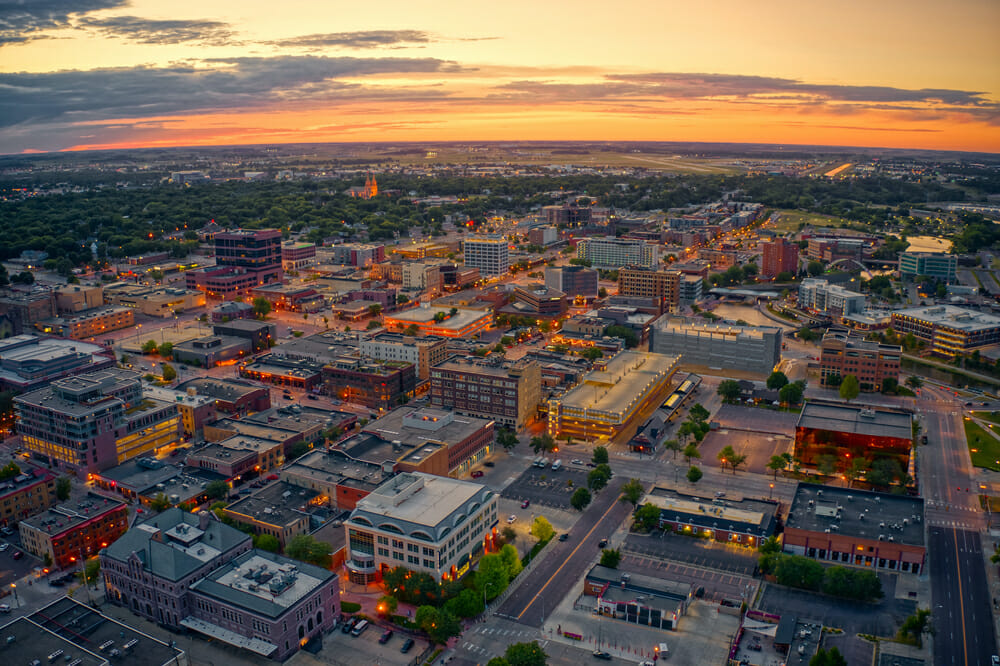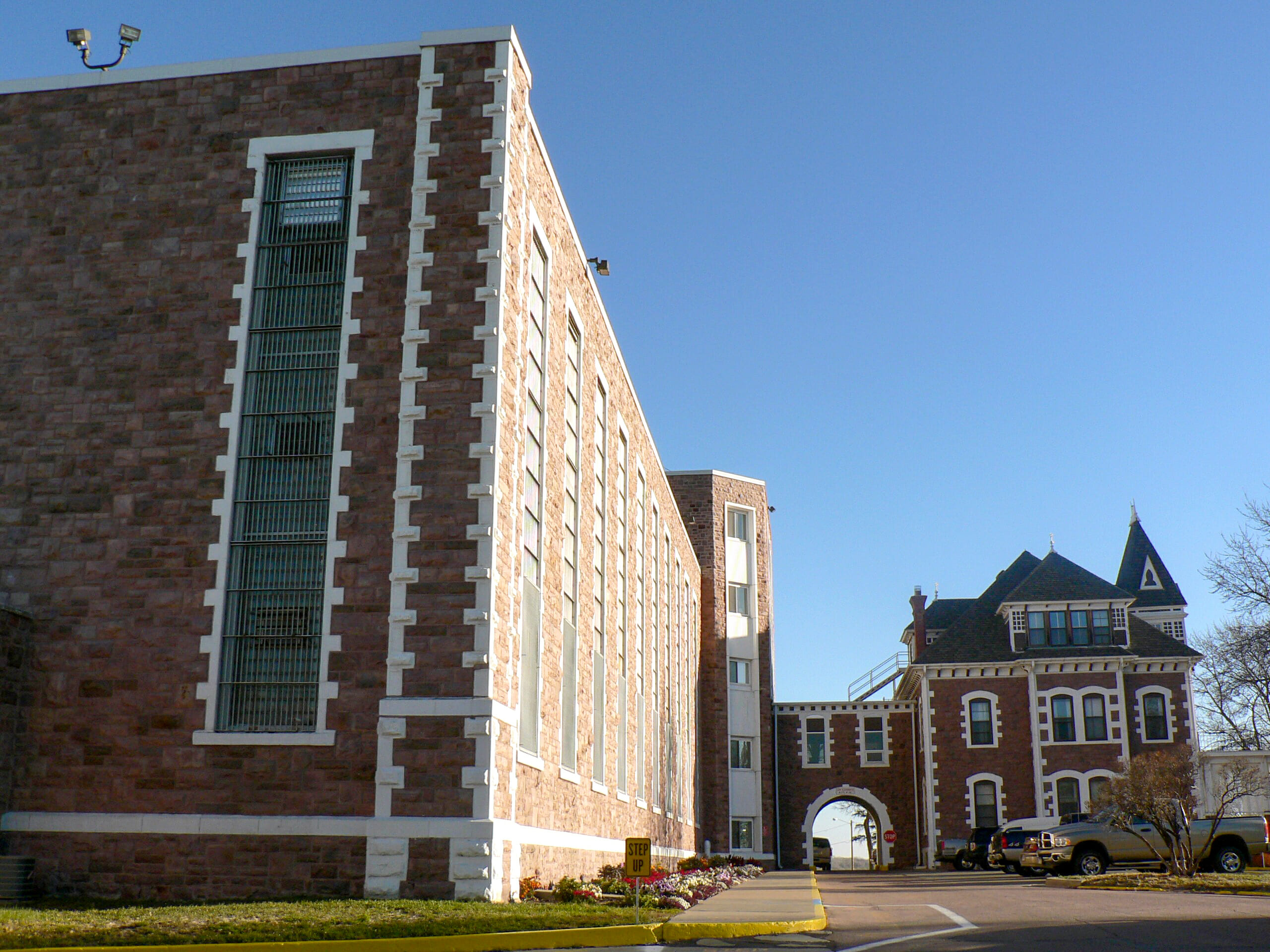
Criminal Justice and Rehabilitation in South Dakota
How a state’s criminal justice system is constructed depends on several factors, like the population of that state, its geographic size, political inclinations, poverty rate, and crime rate. In just a few sections, this article briefly summarizes critical aspects of South Dakota’s criminal justice sector, beginning with studying South Dakota’s prison population.
Prison Population in South Dakota
Learning about criminal justice in South Dakota can be accomplished by finding answers to the following questions:
- What criminal rehabilitation programs are used in South Dakota?
- Are there alternatives to incarceration in South Dakota?
- How many people are incarcerated in South Dakota?
- What are the biggest prisons in South Dakota?
- What is South Dakota’s recidivism rate?
- What is South Dakota’s crime rate?
According to the Bureau of Justice Statistics, South Dakota has the 14th highest incarceration rate in the U.S., just ahead of Florida but just behind Missouri. South Dakota incarcerates about 371 people for every 100,000 living there. The overall U.S. incarceration rate is 350 per 100,000.1
As for the total number of people incarcerated in South Dakota, the National Institute of Corrections records 2,120 individuals held in 26 jails across 66 counties. Most of these individuals are in pre-trial detention or serving short sentences for minor offenses.2
South Dakota operates six state prisons where it holds 3,801 prisoners. South Dakota also manages a community corrections program with 5,424 people under probation and 3,440 under parole.
South Dakota’s Department of Corrections employs 756 employees and operates on an annual budget of $147,395,991. According to the Urban Institute, The Department of Corrections is the seventh costliest item on the state’s budget, at about $300 per capita. South Dakota spends about $20,013 per inmate per year.3

South Dakota State Penitentiary. Image courtesy of doc.sd.gov
According to the Sentencing Project, South Dakota incarcerates about 33 inmates in private prisons, a 27% drop from 45 inmates in private prisons in 2000.4 The largest prison in the state is the South Dakota State Penitentiary, which was opened in 1881 and can hold about 700 adult male offenders.5
Crime Rates in South Dakota
What is the crime rate in South Dakota? The South Dakota State Law Enforcement Division compiles and presents a detailed crime report annually. The following are the 2021 statewide crime rates, as compared to 2020:6
- South Dakota law enforcement officers reported 69,277 crimes in 2021, reflecting a 5.33% decrease from the 2020 figures.
- The murder rate in South Dakota decreased by 45.71% in 2021, with 19 homicides reported, compared to 35 homicides reported in 2020.
- Forcible rape crimes dropped in South Dakota in 2021, with 448 reported crimes (a 10% decline from 499 in 2020).
- South Dakota law enforcement recorded 2,221 burglaries in 2021, a 21% decrease from 2020 when 2,829 burglaries were recorded.
- In 2021, juvenile arrestees accounted for 10.03% (3,828) of the total arrests that year (38,160), up from 3,694 in 2020, an increase of 3.63%.
- Unfortunately, DUI arrests also went up. In 2021, the number of people in South Dakota arrested for a DUI was 5,564, an increase of 618 arrests (or 12%) from 5,036 DUI arrests in 2020.
- Notably, drug-related arrests have been consistently trending downward in South Dakota. In 2021, 6,731 total drug offenses were reported compared to 7,915 reported in 2020, a 15% decrease. In the last five years, drug offenses have decreased by 25%, with 8,404 drug offenses being reported in 2017.
While the above statistics only briefly examine crime in South Dakota, the critical element is that most crime types are trending downward in the Mount Rushmore State.
Recidivism in South Dakota

Photo by Lost_in_the_Midwest/ Shutterstock.com
One of the most important metrics to understand when examining a state’s criminal justice system is the state’s recidivism rate. A recidivism rate measures the percentage of South Dakota offenders who finish their prison sentence, are released from prison, and then re-offend and reenter prison. Why is recidivism so important? Because it shows what percentage of offenders are not experiencing effective reform through that state’s prison system.
According to a report commissioned by the South Dakota Criminal Justice Initiative, South Dakota has a relatively high recidivism rate of 45%. That means the criminal justice system in the state is not working for almost half of those who go through it.7
Effective Criminal Reform Modalities can Reduce Recidivism
South Dakota may reduce its prison recidivism rate by implementing more evidence-based criminal reform modalities. These can include programs like:
- Addiction treatment programs for offenders who misuse drugs and alcohol
- Job skills and work training programs to help offenders learn valuable skills for post-incarceration life
- Programs that teach life skills and coping strategies to help offenders live crime-free lives following their release
Alternatives to Incarceration in South Dakota
South Dakota should also consider simply incarcerating fewer residents. Quoting one report, “Since 1977, the state’s prison population has increased by more than 500 percent, outpacing the national growth rate. The [prison] population grew from 546 in 1977 and surpassed 3,600 inmates in July 2012. Since 2000, the number of inmates in South Dakota has increased by 41 percent, and the number of female inmates has more than doubled. Despite this continued growth in corrections spending, South Dakota has not received a commensurate public safety return as measured by crime and recidivism rates. From 2000 to 2010, South Dakota’s imprisonment rate rose faster than the national average while its crime rate failed to decline at the same pace as the national reduction.” South Carolina policymakers should review their incarceration policies and mandatory minimum sentencing guidelines. Does everyone sentenced to prison in South Dakota need to be in prison?
For nonviolent crimes, South Dakota might consider alternatives to incarceration like:
- Probation
- House arrest
- Community service
- Work release programs
- Substance abuse programs
However, some offenders will require incarceration to improve public safety for South Dakota residents. To create an environment of true reform and to empower violent offenders with the tools they need to lead crime-free lives, policymakers should implement educational programs in prisons in South Dakota. Once offenders are empowered with educational materials that can help them get to the bottom of why they committed a crime, they can work on overcoming that “why?” and begin setting the stage for a crime-free life.
Sources:
- BJS. “Prisoners in 2020 – Statistical Tables.” Bureau of Justice Statistics, 2020. bjs.ojp.gov
- NIC. “South Dakota 2019.” National Institute of Corrections, 2019. nicic.gov
- UrbanInstitute. “Project South Dakota.” Urban Institute, 2023. urban.org
- SentencingProject. “Private Prisons in the United States.” The Sentencing Project, 2019. sentencingproject.org
- PrisonPro. “South Dakota State Penitentiary.” Prison Pro, 2022. prisonpro.com
- SDAG. “Crime in South Dakota 2021.” South Dakota Attorney General, 2021. sdcrime.nibrs.com
- SDCJI. “South Dakota Criminal Justice Initiative Work Group Final Report November 2012.” South Dakota Criminal Justice Initiative, 2012. doc.sd.gov
Related Articles
What Is the Scope of Private Prisons in the U.S.?
In 2001, the Federal Bureau of Justice Assistance authored a report analyzing then-emergent issues regarding private prisons in the United States. According to the authors...
Read more >>
Minnesota Just Became the 28th State to Abolish Life-Without-Parole Sentences for Children
In May of 2023, Minnesota became the latest state to abolish life-without-parole sentences for juvenile offenders, the 28th state to enact criminal justice reform laws...
Read more >>
A Lifer Becomes a Criminon Facilitator and Mentor
Thank you for acknowledging me as a Criminon Facilitator. I take great pride in being a part of the Criminon organization. I've been incarcerated since...
Read more >>
Learning Study Skills to Help My Son
The Learning Skills for Life Course has helped me more than I ever expected if I’m being honest. I am currently doing my best to...
Read more >>





